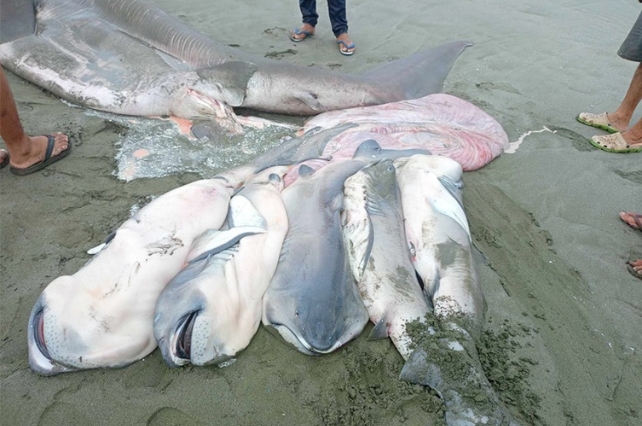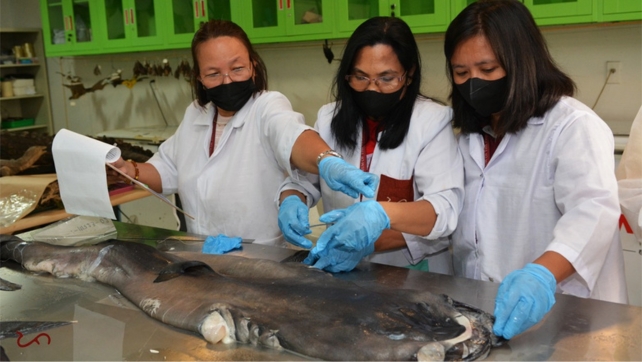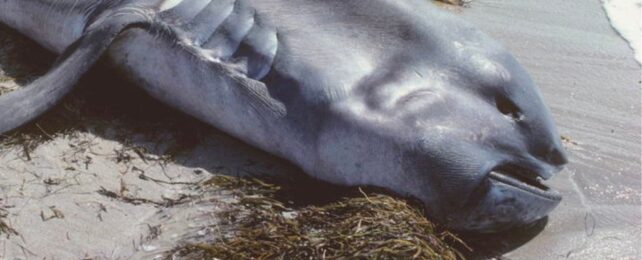In a world first, a megamouth shark has been seen pregnant. A female of this super rare, deepwater species was found washed up on a beach in the Philippines last month.
Unfortunately the megamouth shark (Megachasma pelagios) had to die for us to see this, with one dead young shark found next to her and a further six pups inside.
The discovery proves that megamouths are ovoviviparous, which means that they develop in eggs which hatch inside the mothers, who then give birth to live babies.
The mother megamouth was found on November 14 in Barangay Ipil, Dipaculao, Aurora Province.
She measured an immense 5.6 meters (18.4 feet) in length, which means her 'mega' mouth was likely about 1.3 meters wide, according to Oceana.org.
The National Museum of the Philippines (NMP) shared photos of the remarkable discovery on Facebook, announcing, "LOOK! – The first record of a pregnant megamouth shark in the world!"

The discovery will help scientists learn more about the habits and physiology of this mysterious fish.
"Necropsy was conducted on the mother megamouth shark and one of its pups by Dr. Princess Ann Tayag, Vet II of the Fisheries and Quarantine Unit of BFAR III with the supervision of Dr. AA Yaptinchay of Marine Wildlife Watch of the Philippines (MWWP) via video call from Manila," NMP's statement says.
"The examined sharks were later buried for future retrieval."

Researchers think megamouth sharks, like many other deep-sea creatures, spend the majority of their time underwater, as deep as 4,600 meters (15,100 feet), and only venture to the surface at night.
There has reportedly been less than 300 sightings of this very rare and unusual animal since it was first discovered in 1976.
In the total number of reports for megamouth sharks, the Philippines is second only to Taiwan, making it a significant habitat for this species.
Megamouth #shark washes up in #Philippines and is only the 60th we've ever seen. What we know: http://t.co/0J5aX6IH7o pic.twitter.com/o8Xz1WdmCa
— Shark Devocean (@SharkDevocean) January 28, 2015
Sadly, most megamouth sharks sighted in the Philippines are those who have died due to stranding or accidental entanglement in fishing gear.
Megamouths have a white 'band' on their mouth that appears to reflect light, which they may use to lure prey. Although their name comes from their huge, round mouths, megamouth sharks are not dangerous to humans.
As one of only three filter feeders among the more than 500 species of shark, the megamouth, along with the whale shark (Rhincodon typus) and the basking shark (Cetorhinus maximus), swims with its mouth wide open to catch its favorite planktonic food.
The remaining six megamouth shark pups were taken to the NMP for further research and study. They will be fixed and preserved, the museum says, to be included in reference collections and exhibitions in the future.
We can't wait to discover more about this incredible species.
